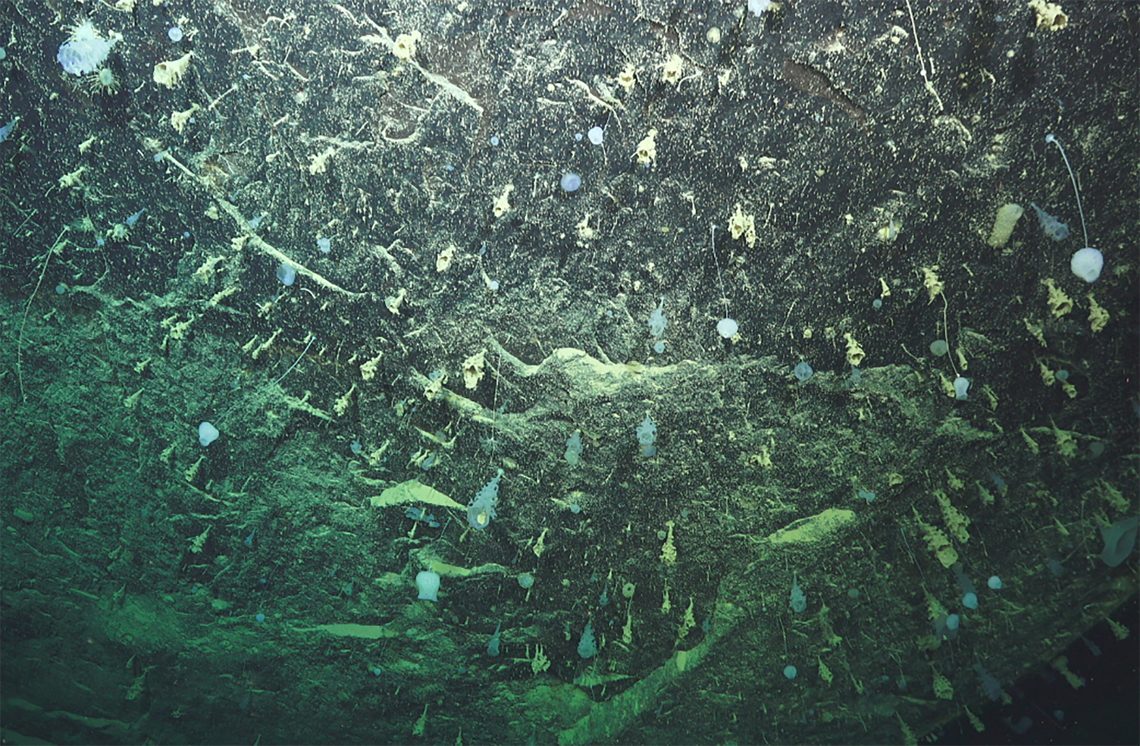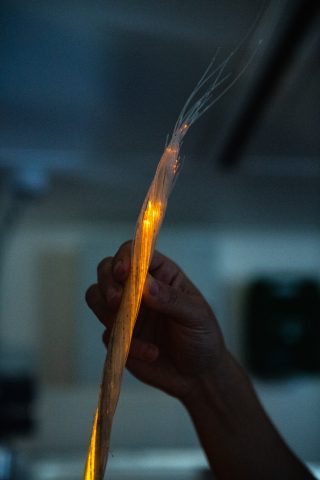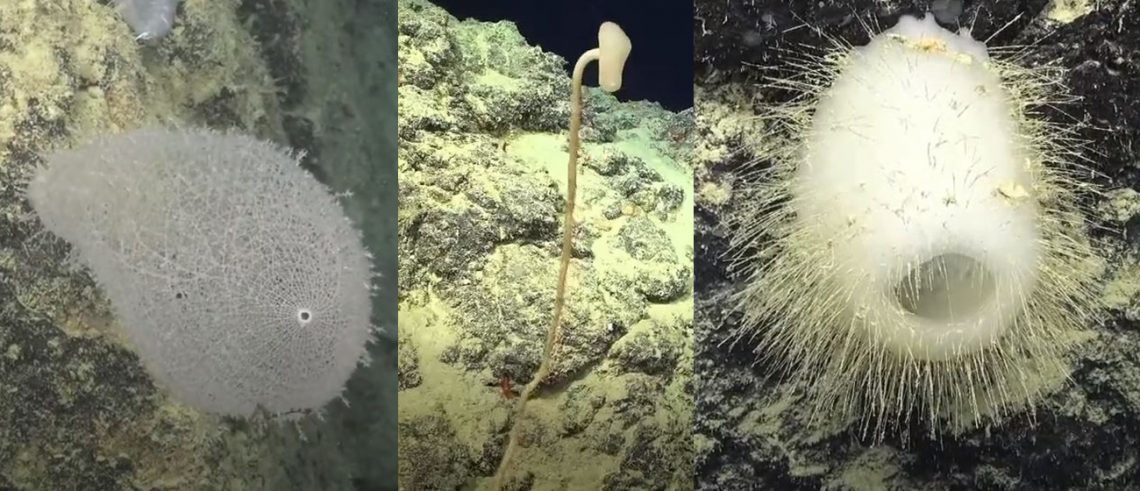Some of the most fascinating organisms in the deep-sea are the hexactinellids, commonly known as glass sponges. Glass sponges live almost exclusively at depths > 300 m and are often dotted throughout our ROV dives, but they can also form dense glass gardens and even reefs. One of the most primitive multicellular animals, glass sponges have a cobweb-like layer of tissue surrounding a skeleton made of silica spicules. That’s right – it is an animal made of glass!

As if that were not enough, here are a few other reasons why glass sponges are one of my favourites:

Incredible spicules: Other sponges have tiny spicules, but glass sponges can grow spicules up to 3 metres long! These spicules have fibre-optic properties rivalling those of commercial telecommunications fibres. During a previous R/V Falkor expedition, we were lucky enough to collect a spicule bundle from a long-dead sponge and treat ourselves to a cutting-edge light show.
Robust lattices: The spicules are the building blocks for remarkably complex glass lattices that act as the sponges’ skeletons. Despite being made of fragile glass components, the lattices themselves are extremely strong yet flexible. Their patterns are being investigated by materials engineers for use in modern building infrastructure, making glass sponges the darlings of the emerging world of bio-inspired engineering.
Habitat provider: Like other sponges, glass sponges can act like an apartment building, hosting numerous crustaceans, worms, and echinoderms. In fact, there’s a genus of glass sponge (Euplectella) that has an incredible symbiosis with shrimp, trapping a mated pair in its glass skeleton.
Many other species extend their long spicules in the sediment to anchor them in the midst of muddy plains. After the animals die, their glass stalks remain for other animals to climb and use the higher location to filter feed from the passing currents.

While we have observed these animals on our dives, the spectacular reefs that glass sponges formed were thought to have been extinct for 40 million years. In the late 1980s, however, scientists discovered living reefs off the northern coast of British Columbia–and these are the only known glass sponge reefs in the world. Who knows what else we will find if we just keep exploring?

